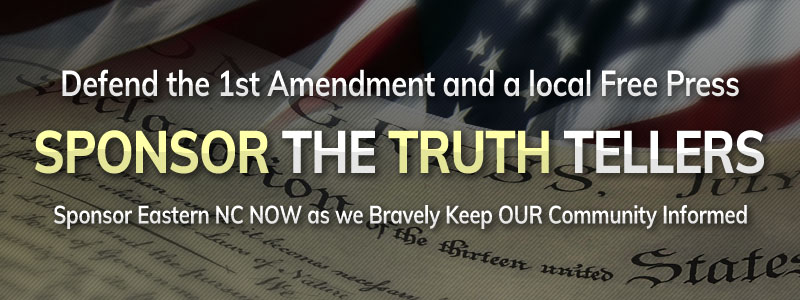Your Basic Needs: Food, Shelter and The TRUTH
It's not About Urban Versus Rural
Publisher's note: This post appears here courtesy of the Carolina Journal, and written by John Hood, chairman of the John Locke Foundation.
How should we respond to the urban-rural divide? The question has legions of politicians, scholars, journalists, and businesses scrambling for answers.
I respect their efforts. But I feel compelled to point out, respectfully, that the question is poorly conceived. Most people live in neither truly urban nor truly rural places. They reside in suburbs - in inner suburbs within a short drive of a truly urban downtown, in outer suburbs further out on the fringe of major metropolitan areas, or in the suburbs of smaller cities such as North Carolina's Hickory, Salisbury, or Greenville.
Trying to make our economic and political conversations fit an "urban vs. rural" frame is wrongheaded. As Jed Kolko and other scholars of contemporary economic trends point out, most people see themselves in neither category. If you talk a lot about "urban" issues such as the optimal location of light-rail lines or "rural" issues such as the plight of family farms, most of the population will tune you out. You aren't talking to them.
People who live in the suburbs, broadly defined, tend to reside in single-family homes and rely on personal automobiles for the vast majority of their transportation needs. That's how most want it. These are personal preferences they have chosen to satisfy, not grim realities they'd rather escape.
In the aftermath of the Great Recession, there was an uptick in transit usage and in demand for downtown apartments and condos. Some excitable analysts thought these choices signified the beginning of a major turn towards "new urbanism," perhaps driven by Millennials with fundamental different values and preferences than those of their parents and grandparents.
But Millennials aren't so different, after all. As economic conditions and job opportunities have improved, many have been looking for opportunities to buy cars and homes, often in the suburbs where many would prefer to rear their anticipated or recently born children.
Downtowns are certainly more vibrant and contain more residences than was true a generation ago. But let's not get carried away. The relevant growth rates have been high because they started from such a low base.
From a policy perspective, the resumption of an overall societal trend towards suburbanization has clear implications. For example, like many other states, North Carolina has inadequate road capacity to handle current and projected traffic. Over the past decade, state policymakers of both parties have made some real progress on the issue, both by boosting revenue from highway users and by significantly reducing the diversion of that revenue to non-highway or low-priority expenditures.
There is still a gap, however. Can we close it by getting people out of their cars altogether, by expanding transit service and bike paths while discouraging low-density development? If you think so, I would submit you are mixing up your urbanist dreams with our suburban realities.
As for politics, the 2018 midterms should have dispelled any sense that "urban vs. rural" adequately conveys the partisan competition between Democrats and Republicans or the battlegrounds where that competition is most acute. As a New York Times reporting team explained in a recent piece, many of this year's Democratic gains in U.S. House seats - and, I would add, in North Carolina legislative seats in Mecklenburg and Wake counties - came in suburban areas with "an eclectic mix of preferences."
Many voters in these places feel "more cosmopolitan than in rural areas and turned off by culture-war issues that animate other Republican voters," the Times noted, but are also "more fiscally conservative than many urban voters, and opposed, for example, to the higher taxes some liberal policies would require."
Suburban districts flipped in 2018 for a variety of reasons, including the effects of the president's persona on the GOP brand as well as good candidate recruitment and message discipline by Democrats. The key point is that many of these Republican-to-Democrat flips were by small margins. They'll be competitive again in 2020 - but only for candidates who avoid the rhetorical trap of "urban vs. rural." That's not the story here.
Go Back
How should we respond to the urban-rural divide? The question has legions of politicians, scholars, journalists, and businesses scrambling for answers.
I respect their efforts. But I feel compelled to point out, respectfully, that the question is poorly conceived. Most people live in neither truly urban nor truly rural places. They reside in suburbs - in inner suburbs within a short drive of a truly urban downtown, in outer suburbs further out on the fringe of major metropolitan areas, or in the suburbs of smaller cities such as North Carolina's Hickory, Salisbury, or Greenville.
Trying to make our economic and political conversations fit an "urban vs. rural" frame is wrongheaded. As Jed Kolko and other scholars of contemporary economic trends point out, most people see themselves in neither category. If you talk a lot about "urban" issues such as the optimal location of light-rail lines or "rural" issues such as the plight of family farms, most of the population will tune you out. You aren't talking to them.
People who live in the suburbs, broadly defined, tend to reside in single-family homes and rely on personal automobiles for the vast majority of their transportation needs. That's how most want it. These are personal preferences they have chosen to satisfy, not grim realities they'd rather escape.
In the aftermath of the Great Recession, there was an uptick in transit usage and in demand for downtown apartments and condos. Some excitable analysts thought these choices signified the beginning of a major turn towards "new urbanism," perhaps driven by Millennials with fundamental different values and preferences than those of their parents and grandparents.
But Millennials aren't so different, after all. As economic conditions and job opportunities have improved, many have been looking for opportunities to buy cars and homes, often in the suburbs where many would prefer to rear their anticipated or recently born children.
Downtowns are certainly more vibrant and contain more residences than was true a generation ago. But let's not get carried away. The relevant growth rates have been high because they started from such a low base.
From a policy perspective, the resumption of an overall societal trend towards suburbanization has clear implications. For example, like many other states, North Carolina has inadequate road capacity to handle current and projected traffic. Over the past decade, state policymakers of both parties have made some real progress on the issue, both by boosting revenue from highway users and by significantly reducing the diversion of that revenue to non-highway or low-priority expenditures.
There is still a gap, however. Can we close it by getting people out of their cars altogether, by expanding transit service and bike paths while discouraging low-density development? If you think so, I would submit you are mixing up your urbanist dreams with our suburban realities.
As for politics, the 2018 midterms should have dispelled any sense that "urban vs. rural" adequately conveys the partisan competition between Democrats and Republicans or the battlegrounds where that competition is most acute. As a New York Times reporting team explained in a recent piece, many of this year's Democratic gains in U.S. House seats - and, I would add, in North Carolina legislative seats in Mecklenburg and Wake counties - came in suburban areas with "an eclectic mix of preferences."
Many voters in these places feel "more cosmopolitan than in rural areas and turned off by culture-war issues that animate other Republican voters," the Times noted, but are also "more fiscally conservative than many urban voters, and opposed, for example, to the higher taxes some liberal policies would require."
Suburban districts flipped in 2018 for a variety of reasons, including the effects of the president's persona on the GOP brand as well as good candidate recruitment and message discipline by Democrats. The key point is that many of these Republican-to-Democrat flips were by small margins. They'll be competitive again in 2020 - but only for candidates who avoid the rhetorical trap of "urban vs. rural." That's not the story here.
Latest Op-Ed & Politics
|
Atheist Soros, although born Jewish, was Nazi collaborator in Hungary in WWII
Published: Friday, April 26th, 2024 @ 11:58 am
By: John Steed
|
|
anti-immigration conservative nationalist beats Social Democrat incumbent 2 to 1
Published: Friday, April 26th, 2024 @ 9:19 am
By: John Steed
|
|
protecting children and parents from gender ideology promoters
Published: Friday, April 26th, 2024 @ 6:45 am
By: John Steed
|
|
Biden wants to push this in public schools and Gov. deSantis says NO
Published: Thursday, April 25th, 2024 @ 9:19 pm
By: John Steed
|
|
eve 45% of Latinos support mass deportation
Published: Thursday, April 25th, 2024 @ 12:40 pm
By: John Steed
|
|
this at the time that pro-Hamas radicals are rioting around the country
Published: Thursday, April 25th, 2024 @ 8:01 am
By: John Steed
|
|
Pro death roundtable
Published: Wednesday, April 24th, 2024 @ 12:39 pm
By: Countrygirl1411
|
|
populist / nationalist anti-immigration AfD most popular party among young voters, CDU second
Published: Wednesday, April 24th, 2024 @ 11:25 am
By: John Steed
|
|
political scheme behhind raid on Mar-a-Lago
Published: Wednesday, April 24th, 2024 @ 9:16 am
By: John Steed
|
|
how many of these will come to North Carolina?
Published: Tuesday, April 23rd, 2024 @ 1:32 pm
By: John Steed
|
|
Barr had previously said he would jump off a bridge before supporting Trump
Published: Tuesday, April 23rd, 2024 @ 11:37 am
By: John Steed
|
|
Babis is leader of opposition in Czech parliament
Published: Tuesday, April 23rd, 2024 @ 10:28 am
By: John Steed
|
























